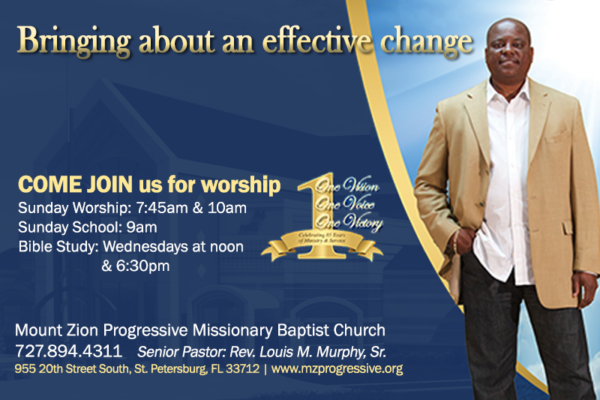Opinion
Toward the REAL Story of St. Petersburg’s Black Economy

– By Imam Askia Muhammad Aquil
On August 6, 2017, the Tampa Bay Times published a lengthy front-page article under the headline “Poverty keeps stubborn grip on Midtown.” We are grateful to the Times for its incisive analysis, for two reasons.
- One, just as the Times’ Pulitzer-prize winning reporting on education did in 2015, this newest panoramic analysis by the Times has raised a level of awareness among leading citizens that simply is not possible to achieve through our own black-targeted media outlets.
- Two, and equally important, the Times’ ground-breaking research has created a new platform that we intend to leverage in the weeks ahead for a more expansive and in-depth look at the trajectory of change in South St. Petersburg.
The Collective Empowerment Group of the Tampa Bay Area, Inc. (CEGTBA) has called upon 10 community development professionals, who possess a combined two centuries of experience shepherding progress in South St. Petersburg, to present “The Real Story of St. Petersburg’s Black Economy.” In the meantime, there are several points that we would like to insert into the public discourse ignited by the Times’ probing journalism.
- It should be known that the $210 million figure reported by the Times – as daunting as it is – vastly understates the level of taxpayer resources expended in South St. Petersburg over the span studied by the Times. A city report cites investments of $430 million from 1999 to 2016, which is separate and apart from the $670 million per year spent addressing poverty-related symptoms and conditions concentrated in South St. Petersburg neighborhoods (a figure identified in the wake of a 2013 study by officials identifying the area as the largest concentration of poverty in Pinellas County).
- It should be known that the findings above catalyzed the creation of the South St. Petersburg Community Redevelopment Area (CRA) at the urging of the Agenda 2010 advocacy initiative. Once successful in cementing the CRA, Agenda 2010 transitioned to spearhead the 2020 Plan whose founders (including myself) also helped spawn the formation of the Collective Empowerment Group of the Tampa Bay Area, Inc. (CEGTBA).
- It should be known that the $210 million figure pales in comparison to the billions of dollars spent on economic development throughout the city over the same period, with similar results, i.e., from 2000 to 2015, white poverty increased (from 9.3% to 12.5%), and the white homeownership rate fell (from 68% to 63%).
- It should be known that a small army of individuals has supported an uninterrupted continuum of advancement in South St. Petersburg, passing the baton from one generation to the next, securing brick-by-brick the wealth of progress now evident in South St. Petersburg. We intend to present evidence and case studies to document this fact.
- Finally, it should be known that the quality of life has indeed materially changed, decade upon decade, for black residents of St. Petersburg, before, during and after the period analyzed by the Times article (and that the Times’ study area is occupied by only one-third of St. Petersburg’s African American community). We will present some data and anecdotal evidence that substantiates this trend. We are making progress even as our community simultaneously confronts and continues to dismantle the crippling effect of government redlining and discriminatory federal lending and housing policies that stifled wealth accumulation in certain neighborhoods compared to others. The Times article appears to completely ignore or dismiss this systemic dynamic, as well as other critical factors that we are methodically addressing as we move forward with our partners.
For more information on the project to portray “The Real Story of St. Petersburg’s Black Economy,” please contact Askia Muhammad Aquil at (727) 235-1416 or Askia.aquil@gmail.com









Sir: A common element in regards to “community re-development agencies:” most models seem to export the inherent wealth rather than attracting importation of wealth. Theoretically: we could put Disney World in South St. Petersburg FL. The locals people would not be able to spend enough money to sustain it. Other populations outside of the area would not come to import their wealth into it. The reality is quite clear and ignored. Case in point: Tropicana Field is within the target area…it is going belly-up in the not too distant future. Was Tropicana Field included in the Times analysis?